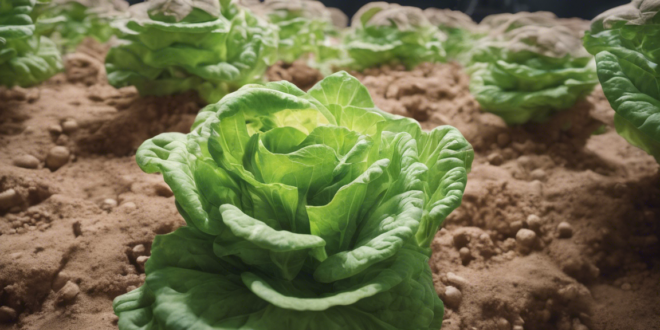Space Lettuce: NASA’s Pioneering Plans to Cultivate Nutritious Crops on Mars
As humanity stands on the brink of interplanetary exploration, NASA scientists are revolutionizing space agriculture with groundbreaking research into growing nutritious plants on the harsh Martian landscape. The ambitious project of cultivating “space lettuce” represents more than just a scientific milestone—it’s a critical step towards sustainable human habitation beyond Earth.
The Challenges of Martian Agriculture
Growing food on Mars is an extraordinary challenge that pushes the boundaries of agricultural science and human innovation. The Red Planet’s environment is dramatically different from Earth, with extreme temperature variations, minimal atmospheric pressure, and intense radiation levels that make traditional farming impossible. NASA researchers are developing sophisticated strategies to overcome these seemingly insurmountable obstacles.
Innovative Growing Technologies
At the forefront of space agriculture research are specialized hydroponic and aeroponic systems designed to maximize plant growth in controlled environments. These advanced cultivation techniques allow plants to grow without soil, using nutrient-rich water solutions and carefully regulated environmental conditions. Specialized LED lighting systems and precise climate control mechanisms simulate optimal growing conditions, enabling crops to thrive in artificial environments that mimic the most challenging planetary conditions.
Radiation-Resistant Plant Breeding
One of the most significant challenges in Martian agriculture is protecting plants from intense cosmic radiation. NASA geneticists are developing specialized plant varieties with enhanced radiation resistance, selectively breeding crops that can withstand the harsh extraterrestrial environment. These genetically modified plants represent a breakthrough in space botany, potentially opening new frontiers for sustainable food production beyond Earth.
Nutritional Engineering: Beyond Simple Survival
The space lettuce project goes far beyond mere survival nutrition. Researchers are engineering plants with enhanced nutritional profiles specifically designed to meet the unique physiological demands of space travelers. These specialized crops will provide not just calories, but targeted nutrients that support human health in extreme environments, addressing potential nutritional deficiencies associated with long-duration space missions.
Closed-Loop Ecological Systems
Mars agricultural research is fundamentally about creating self-sustaining ecological systems. By developing crops that can grow in controlled environments, NASA is laying the groundwork for potential human colonies that can produce their own food. These closed-loop systems would recycle water, generate oxygen, and provide essential nutrition—transforming barren extraterrestrial landscapes into potential human habitats.
Technological Innovations Driving Space Agriculture
Cutting-edge technologies are integral to the space lettuce initiative. Advanced sensors monitor plant growth in real-time, while artificial intelligence algorithms optimize growing conditions. 3D-printed growing chambers and robotic agricultural systems represent the next generation of space farming technology, enabling precise control over every aspect of crop production.
Psychological Benefits of Plant Cultivation in Space
Beyond their nutritional value, plants play a crucial psychological role for space travelers. Growing and tending to living organisms can provide profound mental health benefits, offering a sense of connection to life and nature in the sterile environment of space habitats. The space lettuce project recognizes this important psychological dimension of long-duration space missions.
Economic and Scientific Implications
The research into Martian agriculture has implications that extend far beyond space exploration. Technologies developed for growing crops in extreme environments could revolutionize agricultural practices on Earth, offering solutions for food production in regions with challenging climates. The economic potential of these innovations is immense, potentially transforming global agriculture and food security.
Collaboration and Future Prospects
NASA’s space lettuce project represents a collaborative effort involving botanists, geneticists, engineers, and space scientists from around the world. International partnerships and interdisciplinary research are crucial to advancing our understanding of extraterrestrial agriculture. Each breakthrough brings humanity closer to the ultimate goal of becoming a multi-planetary species.
Conclusion: A New Frontier in Human Exploration
The journey to grow nutritious plants on Mars symbolizes humanity’s incredible capacity for innovation and adaptation. As NASA continues to push the boundaries of scientific understanding, the space lettuce project stands as a testament to human creativity and our relentless pursuit of exploration. With each successful experiment, we move closer to transforming the dream of interplanetary human settlement into a tangible reality.
 Good Calories Guide GoodCalories Guide focuses on nutrition, healthy eating, and overall wellness. The site offers practical insights into evidence-based dietary practices, including tips for specific lifestyles such as veganism, keto, and family-friendly meal planning. It also addresses unique nutritional needs for individuals with conditions like diabetes or food allergies, while providing quick and accessible recipes to make healthy living a sustainable and enjoyable choice.
Good Calories Guide GoodCalories Guide focuses on nutrition, healthy eating, and overall wellness. The site offers practical insights into evidence-based dietary practices, including tips for specific lifestyles such as veganism, keto, and family-friendly meal planning. It also addresses unique nutritional needs for individuals with conditions like diabetes or food allergies, while providing quick and accessible recipes to make healthy living a sustainable and enjoyable choice.


